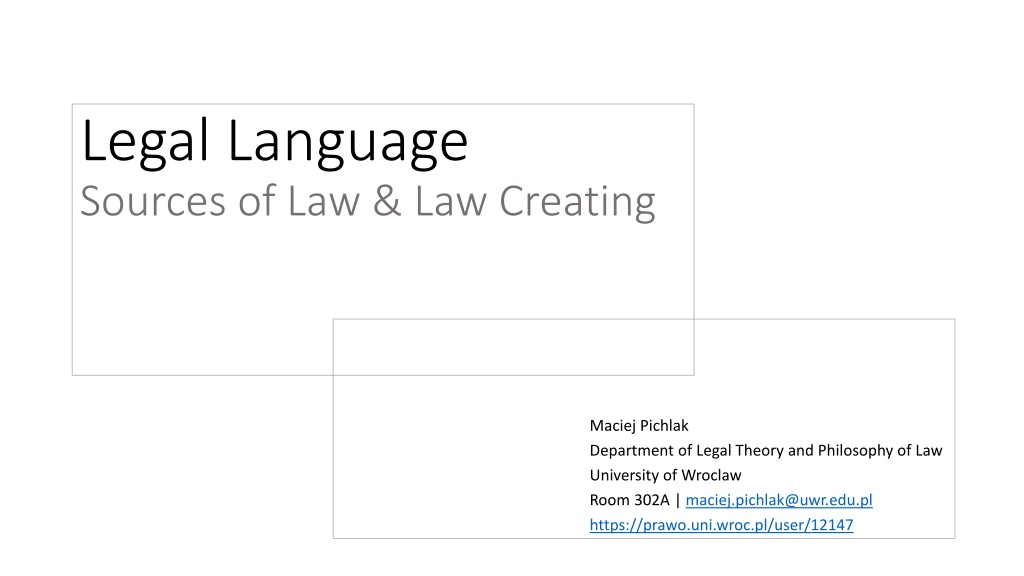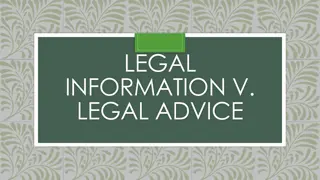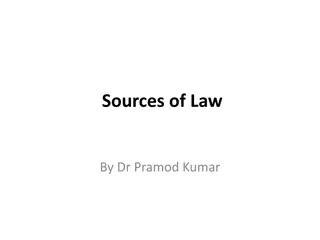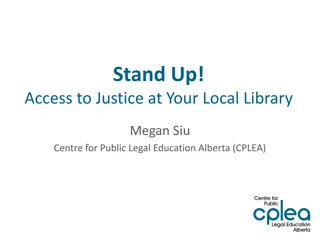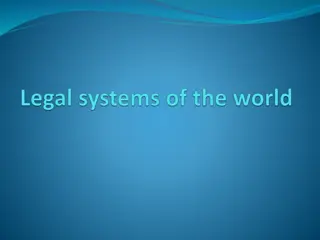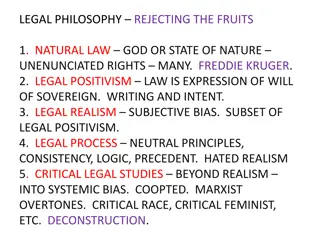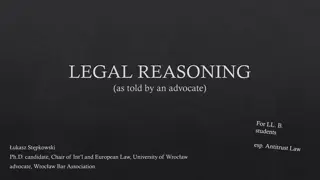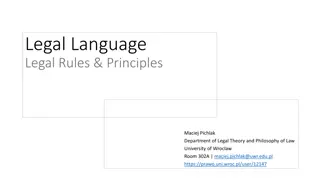Understanding Legal Language: Sources of Law & Law Creation
Explore the concept of sources of law, including formal and informal sources, in the context of legal theory. Learn about the role of constitutions, legislation, case law, and other legal frameworks in establishing the legal, political, and economic order of states.
Download Presentation

Please find below an Image/Link to download the presentation.
The content on the website is provided AS IS for your information and personal use only. It may not be sold, licensed, or shared on other websites without obtaining consent from the author. Download presentation by click this link. If you encounter any issues during the download, it is possible that the publisher has removed the file from their server.
E N D
Presentation Transcript
Legal Language Sources of Law & Law Creating Maciej Pichlak Department of Legal Theory and Philosophy of Law University of Wroclaw Room 302A | maciej.pichlak@uwr.edu.pl https://prawo.uni.wroc.pl/user/12147
The concept of the source of law SOURCES OF LAW Fontes iuris oriundi Fontes iuris cognoscendi formal unofficial material official
Formal sources of law the (ideal?) model Constitution Legislation Subordinate legislation Local laws etc.
and the (harsh?) reality constitution general principles legislation international treaties EU law standards of equity Subordinate legis. / regulation case law local laws and byelaws customary law internal laws
Constitution Determines basic legal, political, and economic order of the state. Typically, it regulates: the government and relationships of its constituent parts, and basic rights and freedoms of citizens. Possesses supremacy over legislation and other laws. More difficult to replace or amend.
UK: unwritten (uncodified) constitution There are three main sources of constitutional rules: (1) statutes: include those relating to the structure of the state such as the Act of Union 1705 and the European Communities Act 1972, those regulating the organs of state such as the Parliament Acts 1911 and 1949, and those relating to fundamental rights such as Magna Carta and the Human Rights Act 1998; (2) case law: created in the ordinary courts; (3) conventions: the rules of the constitution that cannot be enforced by a court. They are at least as important as statutes, but must not be inconsistent with statute law or case law. Youngs, p. 7
Legislation (statutory law) Described also as primary legislation or parliamentary acts. Enacted by the legislatory body (parliament). Issued in the form of either code or statute (piecemeal legislation). Sometimes (France) divided further into organic laws (lois organiques) and ordinary laws (lois ordinaries). Published in official journal.
Subordinate legislation / regulation These forms of legislation that are inferior to and subordinated to the priamry legislation. Two models: as delegated legislation or as independent regulation. Delegated legislation: Poland Independent regulation: USA As a prerogative power of the executive branch of government The elelement of the system of check and balance Special case: independent regulatory agencies (IRA s)
Delegated legislation: regulation in Polish law (rozporz dzenie) Article 92 of the Polish Constitution: 1. Regulations shall be issued a) on the basis of specific authorization contained in statutes b) for the purpose of implementation of statutes c) by the organs specified in the Constitution. 2. The authorization shall specify a) the organ appropriate to issue a regulation b) the scope of matters to be regulated c) guidelines concerning the provisions of such act.
International treaties Ratification: the act of formal signing and confirmation. In some cases (and countries), ratification requires also a consent by legislation. When this is the case, it usually has priority over statutory law. Incorporated into the legal system of the state.
The European Union law 1. Primary law Treaties: Treaty on the Functioning of the European Union (Lisbon Treaty, 2007) 2. Secondary law Regulations Directives Decisions, opinions and recommendations 3. Supplementary law Case law of CJEU General principles An autonomous system, at the same time forming a part of the state law of the member states.
The European Union law Its position in the legal system of member states: Direct effect (van Gend en Loos 1963) Supremacy/ Priority (Costa v. ENEL 1964) Where in the hierarchy? German Constitutional Court: Solange I (1974) and Solange II (1986).
Case law Precedent in the common law and the civil law systems: Precedent de iure (binding) or de facto (persuasive) Binding precedent: - binding for future cases (stare decisis principle); - independent and sufficient ground for decision. The doctrine of precedent and the possibility of overruling.
Customary law Perpetuated and steady practice General conviction on a binding character (opinio iuris) Authentication by state authorities Where is it used? Public international law; laws of indigenous people (Africa, South and North America, Australia); commercial law; common law.
Internal laws: Poland (Resolutions and orders) Article 93 of the Polish constitution: Shall bind only the units organizationally subordinate to the organ which issues such act; shall not serve as the ground for decisions taken in respect of citizens, legal persons and other subjects; shall be subject to scrutiny regarding their compliance with universally binding law.
